
December 23, 2024
New on the SLAS2025 exhibition floor, the NexusXp interactive pavilion showcases collaborative and integrated lab automation scenarios. This latest evolution of the SLAS Lab of the Future program unites life sciences researchers and vendors to advance technology and increase research options in the lab.
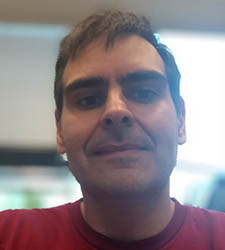
“The reality we face in the laboratory is that we never have one vendor, we have 40 vendors,” says Sam Michael, director, Research Services Core (RSC) and chief information officer (CIO) at the National Institutes of Health's National Center for Advancing Translational Sciences (NIH NCATS, Rockville, MD, USA). “In real life, a lab is a diversity of vendors and applications, and then it’s our job as the integrators to make them work together to achieve a scientific goal.”
Michael comments that it is essential to identify the gaps in technology for the vendors. “This is a huge field at this point, and there are plenty of vendors and solutions, but there are also areas where we need points of connectivity,” he explains. “I have always wanted to see a vendor-agnostic approach where everyone works together on an integration problem.”
To facilitate collaborative interaction between vendors and researchers, SLAS2025 will host the inaugural NexusXp pavilion, a platform to guide researchers into exploring and adopting new methods to integrate technology.
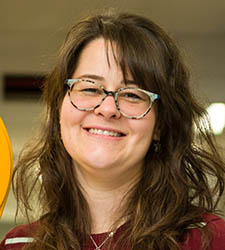
Integration is a challenge that Michael and his NCATS colleague Carleen Klumpp-Thomas, M.S., deputy director, RSC and director of automation, face daily in the lab. “When you bring hardware and software together, there are many nuances and caveats that the vendors don’t always realize,” says Klumpp-Thomas. “Some vendors are open to fixing or helping overcome challenges and some obviously aren’t. I think the collaborative spirit beyond the event and pavilion are key to solving these problems in the lab.”
The NCATS duo signed on early to volunteer their oversight and expertise alongside SLAS Scientific Director Lesley Granberg, Ph.D., in order to carefully curate content scenarios for SLAS NexusXp and ensure scientifically rigorous and engaging content for participants.

“Participating vendors will conduct educational storytelling told in collaborative Integration Scenario Showcases to share accounts of successful integration,” comments Granberg. “You're meant to use the content on the boards as a catalyst to foster the conversation with the vendor. This will ideally provide insight into some of the questions you might have regarding challenges in the lab — from connectivity between software and hardware to using new tech with existing tech. Participation is meant to be interactive and not merely a passive walk-by.”
Michael expands on this comment. “Enabling connectivity requires an investment from all parties involved,” he says. “It’s possible that we’re a bit different at NCATS in that we're willing to put in sweat equity to make hardware and software work while collaborating with our vendors. With NexusXp, SLAS is offering the space and time required to build those relationships. We can't produce these solutions on our own. Everyone must work as a team.”
DESIGN – MAKE – TEST - ANALYZE
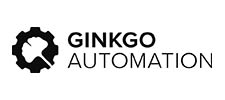
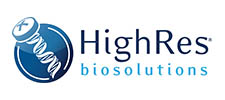

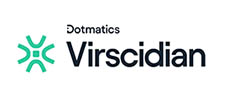
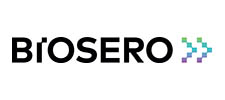
As an exhibit within the exhibition hall — the new pavilion is accessible by a separately purchased ticket — NexusXp is focusing this year’s integration “story” on the well-known Design-Make-Test-Analyze (DMTA) cycle to illustrate all the ways lab automation platforms connect to enable effective drug discovery. By displaying successful collaborations at each step of this cycle, NexusXp can assist any lab director, principal investigator or other lab head to identify their spot in the automation trajectory and build a plan to accelerate their research.
During the Ginkgo Bioworks-sponsored DESIGN presentations, participating vendors will share on-demand material production and true collaboration will be explored through seamless data exchange before turning the process over to lab activities within MAKE.
Within MAKE presentations — sponsored by HighRes Biosolutions — the storytelling will be characterized by increased efficiency, customization and sustainability, driven by advancements in technology and changing market demands. Innovations offered during the MAKE portion of the program include both physical and digital automation, enabling just-in-time (JIT) production of materials. Once the material is produced, the data is automatically forwarded to the TEST and ANALYZE areas for presentations that involve further processing.
In the TEST presentations, participants can expect to learn the story behind a collaboration between this area’s sponsors — Waters Corp. (Milford, MA, USA), Virscidian (Cary, NC, USA) and Biosero (San Diego, CA, USA) — to support a drug discovery company in automating major components of its discovery pipeline with the intention of rapidly advancing new leads for cures and improved healthcare.
The drug discovery company, DeepCure Laboratories, has proprietary software that connects with Biosero's Green Button Go to schedule and execute the required tests across an integrated work cell. Green Button Go is then integrated with Waters' MassLynx and FractionLynx to connect with the LC/MS purification system and Virscidian's Analytical Studio to process the data and provide actionable insights to the scientist about the data that results. Information from the entire automated process is fed back into the drug discovery company's algorithms to improve and expand their capabilities over time.

“We are in exciting times,” comments Andrew Leightner, market development manager, Americas for Waters Corp. “New technologies breathe life into visions that were fantasy only a few years ago. All of these visions made real have a common foundation: collaboration. Collaboration between visionary and technology supplier, and collaboration between multiple technology suppliers. NexusXp provides the opportunity to showcase this collaboration with an example between a visionary and three technology suppliers.”
Leightner explains how Waters, Biosero and Virscidian worked with DeepCure Laboratories on its automated pharmaceutical discovery laboratory. “We will share insights from this collaboration, the output and some best practices,” Leightner says. “During NexusXp we hope to have conversations with key decision makers and visionaries about their lab automation desires.”
For Biosero, NexusXp is all about sharing what’s possible when collaboration is at the heart of an automation project, comments Hayley Dyer, director of marketing for the company.
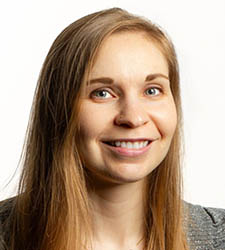
“Close collaboration with vendors and customers is central to what we do at Biosero, and it’s the reason that our lab automation software, Green Button Go, is built to connect with any device or software in the industry,” Dyer continues. “Every single project Biosero works on unites multiple vendors’ products and expertise to create an integrated solution that meets the needs of a lab. In the case of the NexusXp display for TEST, our three companies partnered with one customer to create a fully automated DMTA workflow that iterates and cycles with the power of artificial intelligence, significantly streamlining research timelines. The opportunity has never been greater to leverage expertise across companies to create solutions that tackle new scientific ground.”
Julie Wight, Ph.D., a marketing associate at Virscidian, agrees, adding that like many companies in the industry, theirs thrives on collaboration. “We regularly partner with other organizations, including instrument and robotics vendors, LIMS providers, and more, to deliver comprehensive solutions for our customers,” Wight comments. “At the NexusXp event, we’re excited to showcase our partnership with Waters and Biosero in supporting DeepCure’s cutting-edge platform designed to enable their work. We hope to highlight Virscidian’s capabilities in this space.”
Completing the DMTA cycle, the ANALYZE presentation — also sponsored by Ginkgo Bioworks — will explore examples of data analysis and hypothesis development and share a 360-view of integrated drug discovery scenarios from this area.
"There is ample space in the pavilion not only for the vendor stories to be shared, but also to meet with attending researchers to discuss what their needs are and how technology can be adapted to suit project needs,” says Granberg.
“SLAS wants to facilitate solution discovery between vendor products, and get researchers connected to accelerate discovery through technology,” she continues. “We want to show the life sciences community the synergy that can happen through this type of collaboration and guide others into participating in years to come.”
Dyer supports this, adding: “Participating in NexusXp helps to tell a story about your approach to automation. In a time when more and more scientists are combining automated solutions from multiple businesses, NexusXp gives you the opportunity to share how your organization is open to working on these types of projects.”
Overcoming Integration Hurdles in the Lab
Michael is enthusiastic about the informal meeting areas within the pavilion. “I am excited about the fireside chats and different working groups with the vendors who are present to hear the community discuss the areas that the vendors need to work on,” he says. “This could be a real opportunity for them to do some unsolicited market research into difficulties labs face with integration issues.”
Klumpp-Thomas comments that a big win for the program planning will be to successfully connect vendors and facilitate an open, collaborative environment to address integration of technology in the lab.
She would like for NexusXp to “open the vendors’ eyes and arms to each other and have them work together to solve some of these problems,” she says. “A lot more is being automated in the realm of chemistry as everyone knows — and in other spaces, too. Showing vendors everything that's necessary to operate requires everyone to have the openness to work together. Personally, I would love to see something in the sustainability space.”
The challenge is, “when you have all these disparate vendors and their products — whether those are software or hardware — they don’t necessarily realize that there is a hurdle to get those two things to work together until they talk to the customer. Many times, researchers end up with their own in-house, work-around solutions,” Klumpp-Thomas says.
“And when labs decide to make a solution without vendor involvement, all parties lose,” Michael interjects. “The lab builds something that is only specific to their research, and the vendors don't take that shared experience to another customer.”
Michael adds that the scalability of software is another hurdle to overcome. “One of the things that we're facing as the science gets more data driven is, does vendor software scale to the quantity of data with which we're dealing?” he asks. “The hardware is very robust, but in many cases, the challenge is getting the software to work with the hardware. Throw in terabytes or petabytes of data, and getting a software package to scale becomes overwhelming.”
Other Points of Connection at SLAS2025
In addition to the pavilion, the NexusXp program also will host a short course on Sunday, January 26, 2025, ahead of SLAS2025 opening. The NexusXp — Plan Your Future Lab short course is designed to provide the framework, skills and knowledge to assist participating organizations in the design and implementation of automated laboratory workflows that can be tightly integrated with modern AI machine learning strategies.
Under the guidance of skilled instructors, lab managers, principal investigators, bench scientists and students will learn about how to analyze and optimize laboratory layouts and develop sensible scaling to anticipate future developments. Practical aspects of selecting vendors will be covered as well as internal management of expectations.
An introduction to AI principles will be provided and ways to select optimal machine learning strategies will be explained. Finally, examples of solutions with a focus on DMTA will be presented and discussed.
Granberg describes the NexusXp program as an opportunity for both vendors and the community they serve to “leave the silo” and connect. “It’s exciting to contemplate the potential of NexusXp,” she says. “If everyone commits to being honest about equipment and its capabilities for collaboration and integration, this will become a successful platform. The vendor collaborators who have signed on already are open by nature.”
Michael agrees: “We also want to ensure that the material presented is useful for the researchers to take back to the lab and incorporate.”
Leightner concludes that cross-company partnerships always present a few challenges, “but the output is worth the effort. Take a chance; realize the potential that collaboration can bring.”
Sidelines
Read the Latest about the NexusXp Pavilion at SLAS2025
